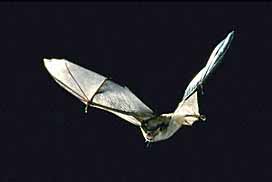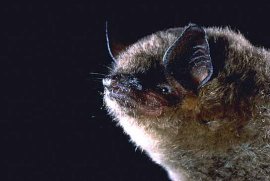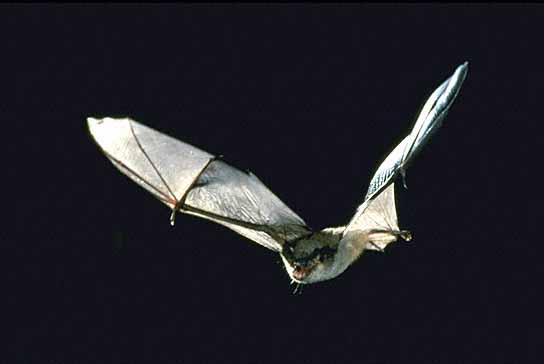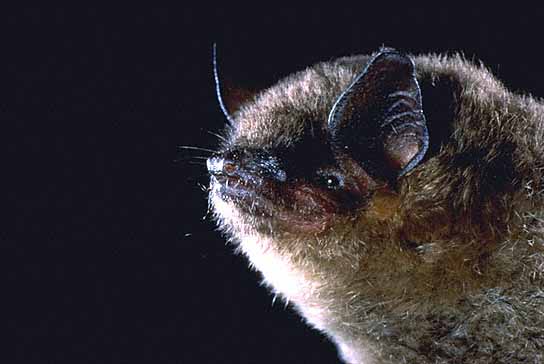Bats
Description
A medium-size bat. Grayish or brownish; hairs uniform in color from base to tip. Calcar not keeled. Ears relatively short; tragus relatively short and rounded. Wing membrane attaches at ankle rather than base of toes. L 3 1/8-3 3/4" (80-96 mm); T 1 1/4-1 3/4" (32-44 mm); HF 1/4- 3/8" (8-11 mm); FA 1 5/8-1 3/4" (41-46 mm); Wt 1/4 oz (6-9 g).
Endangered Status
The Gray Myotis is on the U.S. Endangered Species List. It is classified as endangered throughout its range in Alabama, Arkansas, Florida, Georgia, Illinois, Indiana, Kansas, Kentucky, Missouri, Oklahoma, Tennesee, Virginia, and West Virginia. Such factors as disturbances from cave exploration, the opening of caves to the public, and the flooding of caves through dam-building have caused a serious decline in populations of this bat. When humans disturb bats in their caves, the agitated bats may accidentally drop their young to their deaths. Excessive harrassment will cause bats to leave a cave altogether; they are sometimes then forced to settle in a less suitable roosting spot. Although this bat declined by perhaps 50 percent in the late 20th century, thanks to its protected status, many of its populations appear to have stabilized.
![]()
Warning
Bats are susceptible to rabies, a serious viral disease that results in death if untreated. Rabid bats rarely attack humans or other animals, but bats found lying on the ground may be rabid. Never touch or pick up any bat. Stay away from any animal that seems to be acting strangely and report it to animal-control officers. If you are bitten by a possibly rabid animal, you must immediately consult a doctor for a series of injections; there is no cure once symptoms emerge.
Similar Species
While many other myotises have bicolored hairs, with contrasting base and tip, no other bat has wing membrane attached at ankle.
Range
Northwestern Oklahoma, n Arkansas, and Missouri, east through Kentucky and Tennessee, and south through Alabama and w Georgia.
Discussion
A true cave species, the Gray Myotis feeds on various insects and often eats mayflies. Females and young congregate in huge numbers apart from the males in large caves containing much water. The maternity colonies disband in late July or August after the young are weaned. These bats move in large flocks between summer and winter caves, with hibernating colonies forming in October. Most members of this species hibernate in only a very few specific locations. Eastern individuals have three main wintering caves, one each in northeastern Alabama, central Tennessee, and eastern Tennessee. The one maternity colony in Indiana, with 1,100 individuals (and on the increase), is in a water-filled quarry with several entrances.




